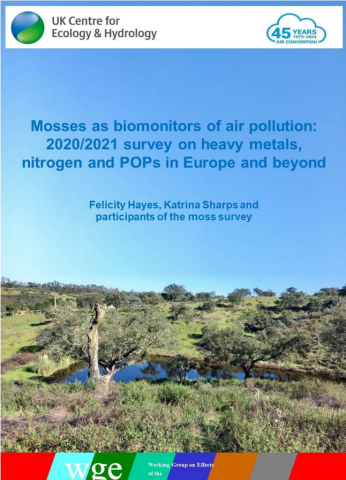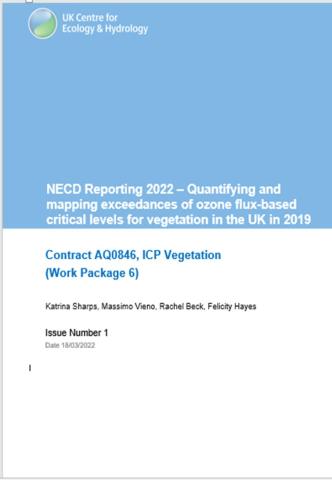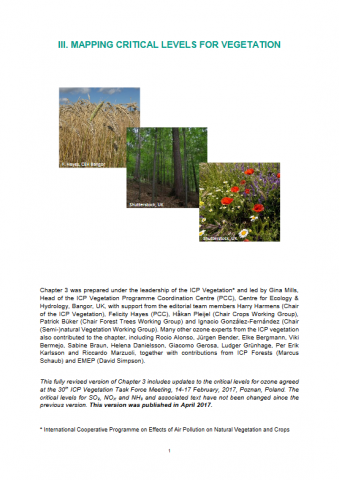| Title | Are cadmium, lead and mercury concentrations in mosses across Europe primarily determined by atmospheric deposition of these metals? |
| Publication Type | Journal Article |
| Year of Publication | 2010 |
| Authors | Schroder W., Holy M., Pesch R., Harmens H., Ilyin I., Steinnes E., Alber R., Aleksiayenak Y., Blum O., Coskun M., Dam M., De Temmerman L., Frolova M., Frontasyeva M., Miqueo L.G, Grodzinska K., Jeran Z., Korzekwa S., Krmar M., Kubin E., Kvietkus K., Leblond S., Liiv S., Magnusson S., Mankovska B., Piispanen J., Ruhling A., Santamaria J., Spiric Z., Suchara I., Thoni L., Urumov V., Yurukova L., Zechmeister H.G |
| Journal | Journal of Soils and Sediments |
| Volume | 10 |
| Pagination | 1572-1584 |
| Date Published | Dec |
| Keywords | heavy metals, nitrogen |
| Abstract | This study aimed at investigating correlations between heavy metal concentrations in mosses and modelled deposition values as well as other site-specific and regional characteristics to determine which factors primarily affect cadmium, lead and mercury concentrations in mosses. The resulting relationships could potentially be used to enhance the spatial resolution of heavy metal deposition maps across Europe.
Modelled heavy metal deposition data and data on the concentration of heavy metals in naturally growing mosses were integrated into a geographic information system and analysed by means of bivariate rank correlation analysis and multivariate decision trees. Modelled deposition data were validated annually with deposition measurements at up to 63 EMEP measurement stations within the European Monitoring and Evaluation Programme (EMEP), and mosses were collected at up to 7,000 sites at 5-year intervals between 1990 and 2005.
Moderate to high correlations were found between cadmium and lead concentrations in mosses and modelled atmospheric deposition of these metals: Spearman rank correlation coefficients were between 0.62 and 0.67, and 0.67 and 0.73 for cadmium and lead, respectively (p < 0.001). Multivariate decision tree analyses showed that cadmium and lead concentrations in mosses were primarily determined by the atmospheric deposition of these metals, followed by emissions of the metals. Low to very low correlations were observed between mercury concentrations in mosses and modelled atmospheric deposition of mercury. According to the multivariate analyses, spatial variations of the mercury concentration in mosses was primarily associated with the sampled moss species and not with the modelled deposition, but regional differences in the atmospheric chemistry of mercury and corresponding interactions with the moss may also be involved.
At least for cadmium and lead, concentrations in mosses are a valuable tool in determining and mapping the spatial variation in atmospheric deposition across Europe at a high spatial resolution. For mercury, more studies are needed to elucidate interactions of different chemical species with the moss.
|
| Short Title | J Soil SedimentJ Soil Sediment |
| Alternate Journal | J Soil Sediment |


